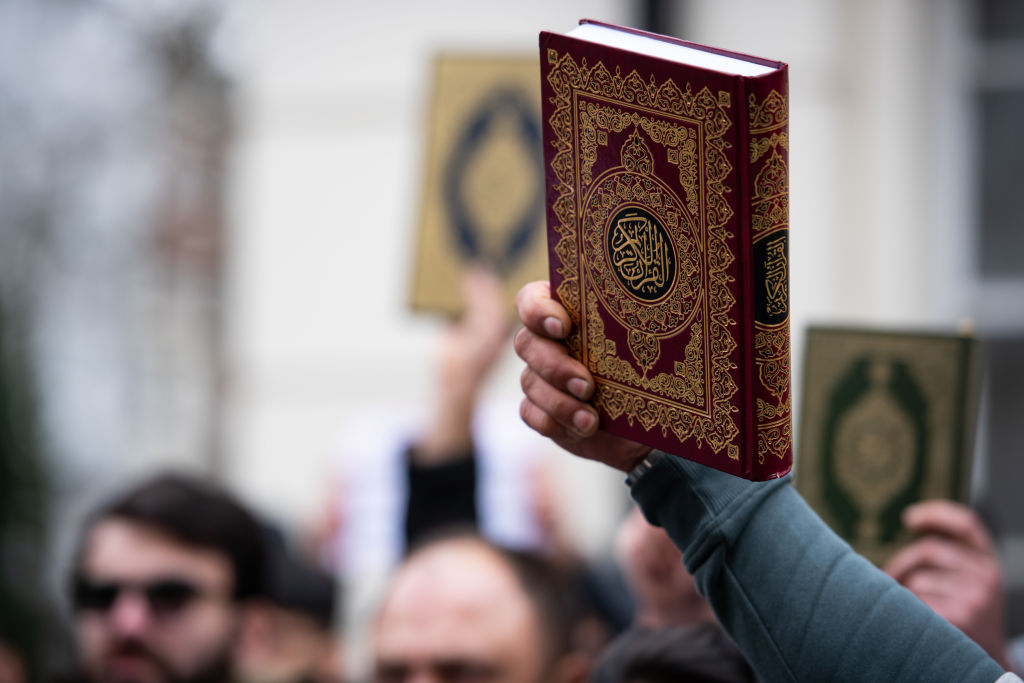Just before graffiti-gate in Canterbury Cathedral kicked off a few weeks ago, it hosted the announcement of the 106th Archbishop of Canterbury-designate: the Rt Revd Dame Sarah Mullally. Or ABCD, as it is rumoured she is being called at Lambeth Palace. Lord knows, we love an acronym in the Church of England these days. It helps, at least, make the CofE seem accessible. But has the push to make our new Primate seem like just a regular Joe (or Jo!) gone too far?
Lord knows, we love an acronym in the established church these days
It was confirmed this morning that our new Archbishop will finally take up her role, in a service also held at Canterbury Cathedral on 25th March next year. But while previously such a service has been widely known as an archbishop’s enthronement, this time it is being referred to as an ‘installation’. It’s almost as if one were popping in some double glazing, or a nice new kitchen, rather than an Archbishop taking up their seat on the Canterbury cathedra, the 13th century Petworth marble chair of St Augustine.
At some theological colleges, trainee clergy have been known to learn a phrase to wheel out when the going gets tough; ‘you are right in what you affirm, and wrong in what you do not’. This description feels apt here.
The service is indeed an installation – a formal legal and liturgical act, used for deans and canons, archdeacons and bishops, as they are physically put into their new seat in Cathedrals. Technically, during the service in Canterbury, an Archbishop has historically taken up no less than three ceremonial ‘thrones’. One is a Victorian throne in the south side of the choir representing their role as diocesan bishop, then into St. Augustine’s chair as Primate of All England and leader of the worldwide Anglican Communion. And a third seat in the Chapter House, following the main service.
But is the new terminology losing some of the magic? The Archbishop’s website acknowledges that the upcoming service is ‘historically known as an enthronement’. In 2013, the then Archbishop Justin Welby’s service was publicly referred to as an enthronement by the Anglican Communion News service. In 2020, Stephen Cottrell was ‘enthroned’ as Archbishop of York. But the times – and language – appear to have changed as the new Archbishop is ‘installed’. Is it that enthronement now speaks too much of hierarchy? Or are we terrified of being seen as too traditional? In a service with three special seats, why not call a spade a spade?
It could be worse. The order of service for Welby’s service in 2013 called it an ‘inauguration’. Very presidential. But then Welby was a huge fan of The West Wing. And when the Bishop of Winchester joined his diocese last year, they publicly promoted a ‘service of welcome’. Where has the glamour gone? In a country where the King’s coronation generated so much excitement, can we not attempt to maintain a little more mystique in the church? In a world of geopolitical uncertainty, wouldn’t it be better to stick with tradition and give us an allusion to the numinous, and less of the lanyard-speak? Installation might be accurate, but the connotations for the average person in (or more likely not in) the pews are hardly other-worldly. The church talks a good game excitedly about the ‘quiet revival’ while young people search for something different to the culture they see around them.
None of this will alter what happens in the service itself in March. When we see the actual liturgy, doubtless there will be more to reflect and ruminate on. But still, how this service is presented to the public surely matters. This month, the new Bishop of Jamaica and the Cayman Islands landed in his diocese. They had no problem calling it an enthronement. So why on earth can’t we?







Comments